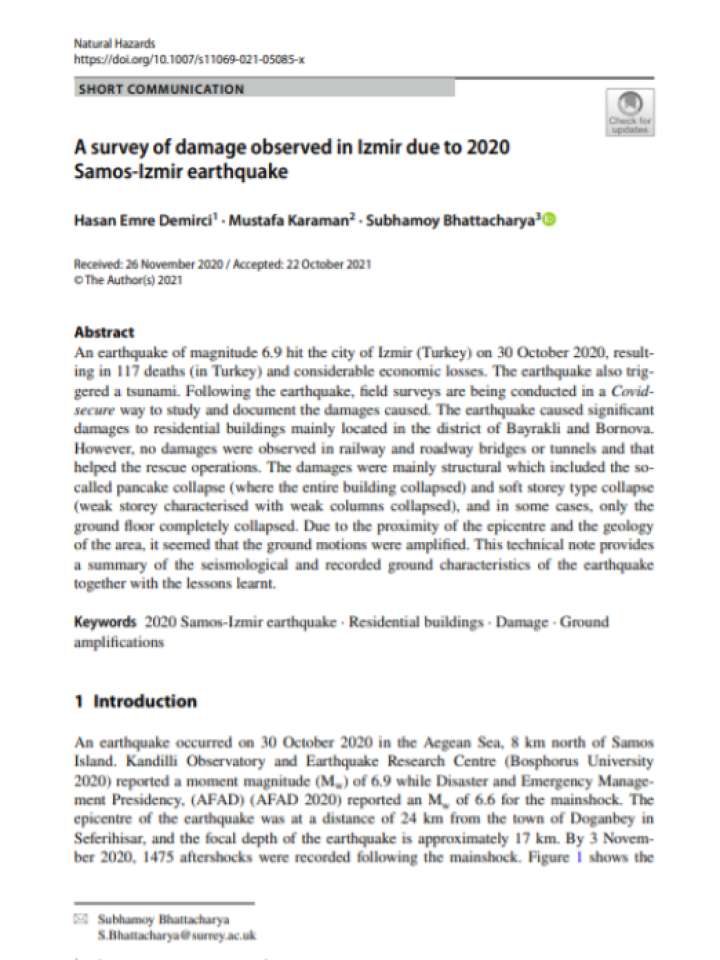A survey of damage observed in Izmir due to 2020 Samos-Izmir earthquake
This technical note provides a summary of the seismological and recorded ground characteristics of the 2020 Samos-Izmir Earthquake earthquake together with the lessons learnt. The magnitude 6.9 quake hit the city of Izmir (Turkey) on 30 October 2020, resulting in 117 deaths (in Turkey) and considerable economic losses. The earthquake also triggered a tsunami. Following the earthquake, field surveys are being conducted in a Covid-secure way to study and document the damages caused. The earthquake caused significant damages to residential buildings mainly located in the district of Bayrakli and Bornova. However, no damages were observed in railway and roadway bridges or tunnels and that helped the rescue operations. The damages were mainly structural which included the so-called pancake collapse (where the entire building collapsed) and soft storey type collapse (weak storey characterised with weak columns collapsed), and in some cases, only the ground floor completely collapsed. Due to the proximity of the epicentre and the geology of the area, it seemed that the ground motions were amplified.
This report notes that the buildings that collapsed during the earthquake were built more than 30 years ago with improper design and poor structural detailing (beam-column connections poorly executed with lacking confining reinforcements) and were most likely to be the cause of failure. The ordinates of 5%-damped elastic acceleration response spectra of the recordings in the damaged area did not exceed the ordinates of design code spectra proposed in 1975 and 2018 Turkish Earthquake Codes (TEC 1975; TEC 2018). Majority of the new buildings designed based on the latest codes of practice suffered only cracks in the non-structural part. Many parts of Turkey are seismic prone zone, and it is necessary to strengthen/retrofit the old buildings based on the latest understanding. The earthquake also triggered a tsunami in the Aegean Sea causing economic loss. Therefore, risk maps for the tsunami need to be developed for better preparedness.
Explore further
